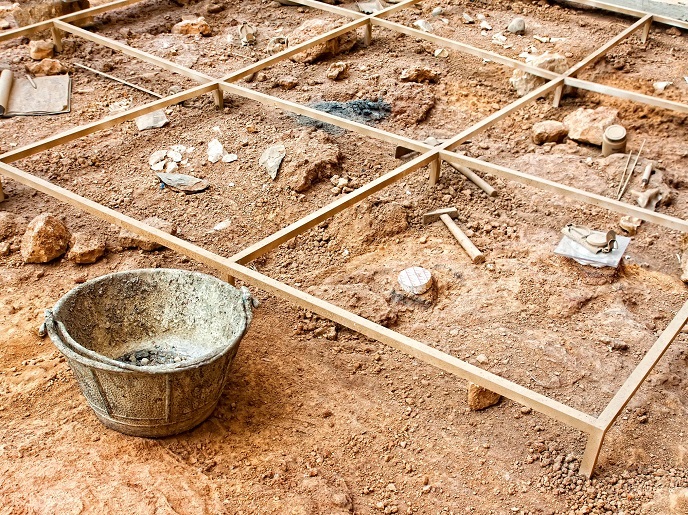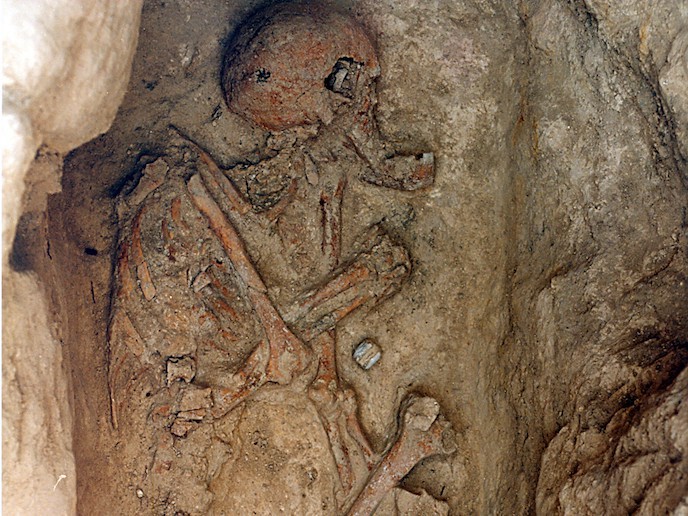Integrated investigation of livestock dung in archaeology
Livestock dung is exploited worldwide as a source of fertiliser, fuel, temper and building material. At the same time, dung constitutes an interdisciplinary area of research as it provides valuable information on a wide range of social, cultural, environmental and ecological issues. Novel methodologies for archaeological dung Although livestock faeces are commonly encountered in many human settlements, especially after the domestication of herds, these are regularly overlooked or missed using conventional excavation methods in archaeology. This is due to methodological problems in recovering and identifying dung remains during excavation, and maintaining critical evidence with respect to its content and deposition. The EU-funded Horizon 2020 MICROARCHAEODUNG project, through a Marie Skłodowska-Curie Individual Fellowship, addressed this issue by developing integrated analytical approaches at the University of Reading, in collaboration with the University of Bristol. Scientists proposed an interdisciplinary approach to examine the archaeological context and content of dung both in the field and in the laboratory. In particular, they combined methodologies from geosciences, botany and biochemistry to enable the identification and interpretation of ancient faecal remains in archaeology. The project focused on two key regions, the Near East and northern Africa that contain some important prehistoric sites. These included the newly discovered Neolithic site of Bestansur in Iraq where excavations are co-directed by the project's host scientist Dr Wendy Matthews. “Our aim was to study faecal remains and obtain information on diverse cultural and socio-economic aspects of past human lifeways across territories,″ explains MICROARCHAEODUNG lead researcher Dr Marta Portillo. Before the project, dung had been largely unexplored as a source of information on the origins and spread of animal management and domestication. The team sampled archaeological sites to obtain direct evidence on herbivorous and/or omnivorous dung. Through biochemical analysis of organic biomarkers, scientists were able to distinguish animal from human faecal remains, thus providing new information on early agricultural diet. Overall, MICROARCHAEODUNG investigated critical periods of environmental and social change focusing on the emergence of agricultural societies and domestication of animals. Results unveiled novel information regarding early farming practices, animal management, fuel availability, and early agricultural food supply and consumption. Generated evidence showed considerable chronological and contextual variation in human-animal interrelations across territories spanning from around 10 000 years ago. Importantly, in combination with ethnographic observations and comparative modern reference and experimental data MICROARCHAEODUNG demonstrated that dung use as a fuel source was widespread in early Neolithic agricultural settlements, and utilised even earlier. Impact of archaeological dung The interdisciplinary approach of MICROARCHAEODUNG demonstrated that integrated studies of archaeological and modern dung can make a major contribution to understanding the developments of society over time. Especially in regions like northern Africa, archaeological research has largely relied on cultural sequencing and dating, stone tools and technology, hunting/fishing and mollusc gathering. Dr Portillo argues that MICROARCHAEODUNG will change that by “contributing enormously to the standardisation of dung investigation in archaeology, thus becoming a key analytical methodology and reference for future research.″ Besides methodology, MICROARCHAEODUNG generated innovative archaeological, ethnoarchaeological, and experimental datasets that can be used for comparison in further studies by researchers worldwide. Scientists proposed models on the factors that affect the formation, composition, preservation and decay of animal dung, and the ecological and management practices influencing these. The project has laid the foundation for making study results on ancient faecal remains reproducible in other regions. The team is currently expanding the reference tools they developed to Mediterranean island ecosystems such as Menorca in the Balearic Islands, home of protected prehistoric sites and declared as a Biosphere Reserve by UNESCO. Collectively, the archaeological study of livestock dung and human-animal relationships provides important insights into issues of global concern today, such as biodiversity, the use of natural resources and energy supply, agricultural development and animal management. Dr Portillo envisages “the information on how food, fodder and fuel availability and consumption change in response to changing climate and greater human manipulation will help us better understand the sustainability of social and cultural practices through time.″







